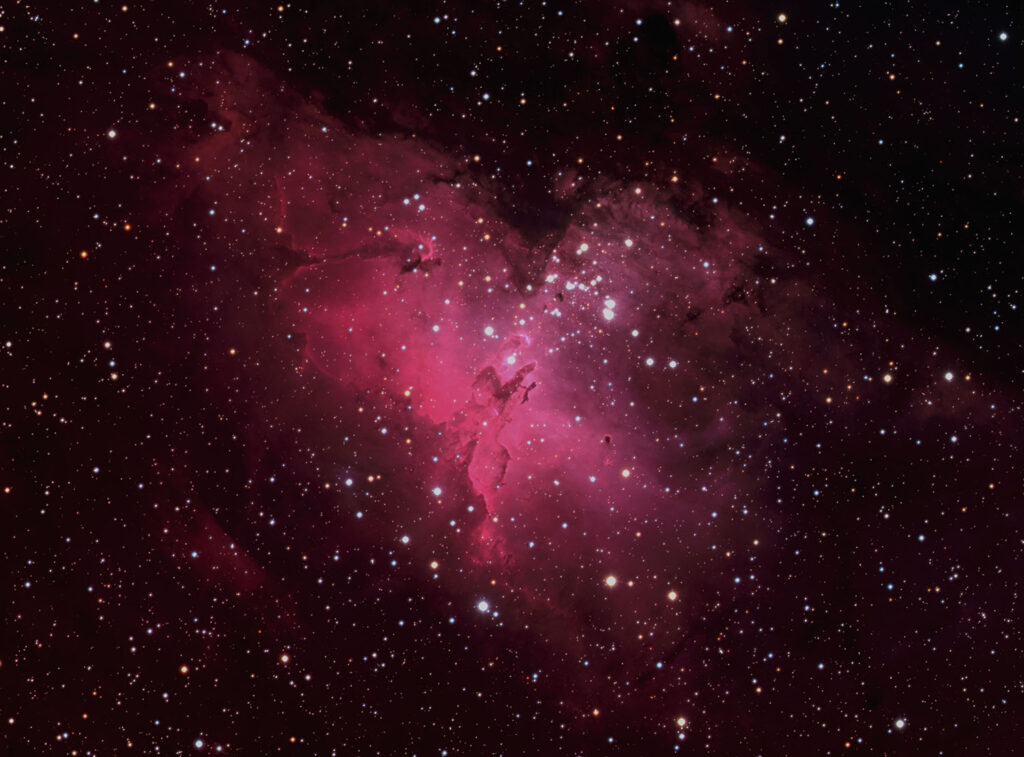Messier 16
The Eagle Nebula, Emission Nebula. Serpens Cauda
- Description
- Technical
- Links
The Eagle Nebula (catalogued as Messier 16 or M16, and as NGC 6611, and also known as the Star Queen Nebula and The Spire) is a young open cluster of stars in the constellation Serpens, discovered by Jean-Philippe de Cheseaux in 1745–46. Both the “Eagle” and the “Star Queen” refer to visual impressions of the dark silhouette near the center of the nebula, an area made famous as the “Pillars of Creation” imaged by the Hubble Space Telescope. The nebula contains several active star-forming gas and dust regions, including the aforementioned Pillars of Creation.
The Eagle Nebula is part of a diffuse emission nebula, or H II region, which is catalogued as IC 4703. This region of active current star formation is about 5700 light-years distant. A spire of gas that can be seen coming off the nebula in the northeastern part is approximately 9.5 light-years or about 90 trillion kilometers long.
The cluster associated with the nebula has approximately 8100 stars, which are mostly concentrated in a gap in the molecular cloud to the north-west of the Pillars.[6] The brightest star (HD 168076) has an apparent magnitude of +8.24, easily visible with good binoculars. It is actually a binary star formed of an O3.5V star plus an O7.5V companion. This star has a mass of roughly 80 solar masses, and a luminosity up to 1 million times that of the Sun. The cluster’s age has been estimated to be 1–2 million years.
The descriptive names reflect impressions of the shape of the central pillar rising from the southeast into the central luminous area. The name “Star Queen Nebula” was introduced by Robert Burnham, Jr., reflecting his characterization of the central pillar as the Star Queen shown in silhouette.
Telescope: Astro Physics 175EDF f8.3
Mount: Astro Physics 3600GTO “El Capitan”
Camera: SBIG STT8300
Guider: Mini Borg 50 / SBIG STi
L: 72×10 mins = 720 mins, R: 24×10 mins = 240 mins, G: 24×10 mins = 240 mins, B: 24×10 mins = 240 mins
Total Imaging Time: 24h 00m
Data Imaged remotely over 2 separate years & 15 nights (May 2016 & Apl/May 2018).
Data acquisition & Processing by David Churchill.
None

